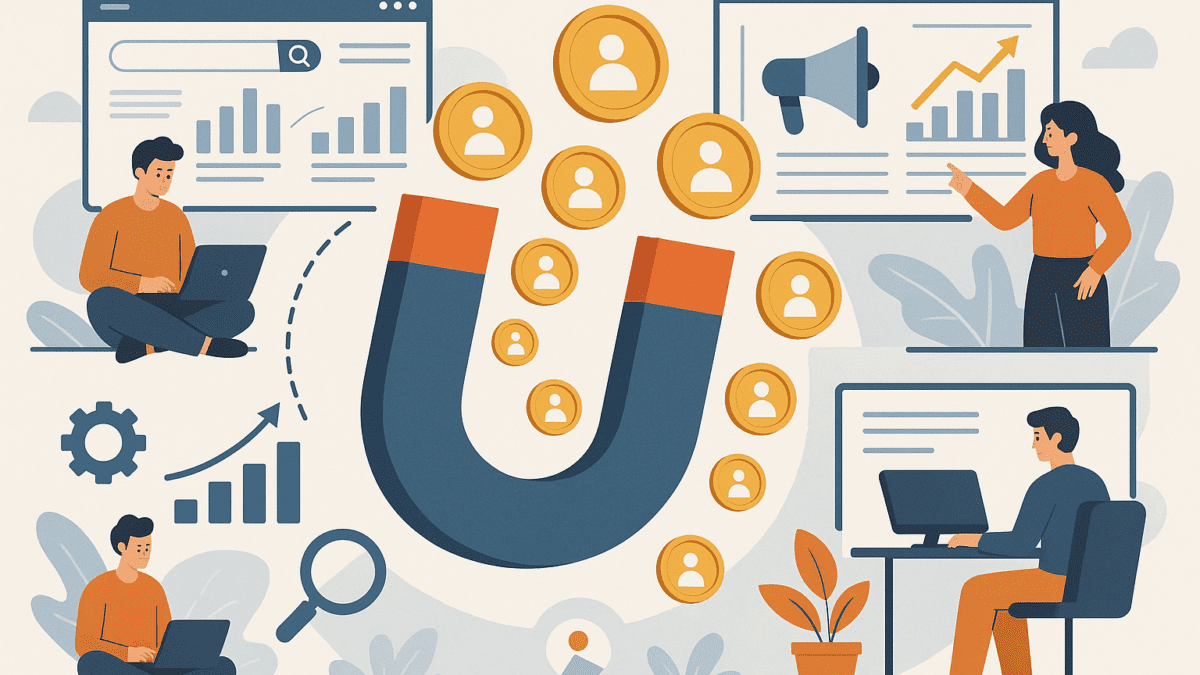Lead Generation in 2025: Strategies, Tools, and Trends That Work
Table of Contents
Introduction
Lead generation has always been the lifeblood of B2B marketing. But in 2025, it looks very different from the days of cold calls and mass email blasts. Buyers are more informed, competition is fiercer, and AI-driven personalization has raised the bar for what counts as a “qualified lead.”
To succeed, businesses must shift from outdated tactics to modern, multi-channel lead generation strategies that combine content, data, and technology.
What is Lead Generation?
Lead generation is the process of attracting and converting potential customers (leads) who have shown interest in your product or service. It typically involves:
- Attracting prospects through marketing campaigns.
- Capturing information (name, email, company, role).
- Qualifying leads to ensure they match your target profile.
- Nurturing them until they are ready to buy.
In B2B, lead generation is less about volume and more about quality and intent.
Why Lead Generation Is Changing in 2025
- AI-Powered Buyers – Customers use AI search engines and assistants to research before they ever talk to sales.
- Data Privacy Laws – Stricter regulations mean consent-driven, first-party data collection is critical.
- Content Over Ads – Audiences trust high-value content (whitepapers, reports, webinars) more than flashy ads.
- Account-Based Marketing (ABM) – Companies target decision-makers at specific accounts instead of casting a wide net.
Top Lead Generation Strategies for 2025
Content Marketing & Syndication
- Whitepapers, eBooks, and reports generate high-intent leads.
- Content syndication pushes your assets onto trusted third-party platforms (like iTMunch B2B Content Syndication) to reach decision-makers.
Example: A cybersecurity SaaS company syndicates its “2025 Threat Report” to capture CTO and CIO leads globally.
AI-Powered SEO & GEO (Generative Engine Optimization)
- Traditional SEO is shifting as AI-powered engines like ChatGPT and Google Gemini deliver answers directly.
- Businesses must optimize for GEO (Generative Engine Optimization) to ensure they are mentioned in AI-generated search results.
Account-Based Marketing (ABM)
- Targeting specific accounts and decision-makers with personalized campaigns.
- Tools like HubSpot ABM, Demandbase, and 6sense help align sales and marketing.
LinkedIn Networking & Social Selling
- 4 out of 5 B2B leads come from LinkedIn.
- Building personal brands, sharing insights, and connecting with decision-makers drives organic lead flow.
Email Marketing & Cold Outreach
- Still one of the highest ROI channels when personalized.
- Cold emails in 2025 must be value-driven, short, and personalized using intent data.
Webinars & Virtual Events
- Interactive formats like webinars, panel discussions, and virtual demos remain excellent lead magnets.
- Repurpose webinar recordings into gated on-demand assets.
Chatbots & Conversational Marketing
- AI-powered chatbots (Drift, Intercom) convert anonymous visitors into qualified leads 24/7.
- Conversational lead capture feels natural, improving conversion rates.
Lead Generation Tools in 2025
- HubSpot – CRM, ABM, and lead nurturing.
- LinkedIn Sales Navigator – Advanced filters for prospecting.
- Apollo.io / ZoomInfo – Contact and company databases.
- Clearbit – Real-time lead enrichment.
- Outreach / SalesLoft – Email & cadence automation.
- Drift / Intercom – Conversational marketing and chatbot lead capture.
Measuring Lead Generation Success
Key metrics to track:
- MQL to SQL Conversion Rate – Are marketing leads becoming sales-ready?
- Cost per Lead (CPL) – Efficiency of campaigns.
- Lead Quality Score – Based on job title, intent, and engagement.
- Pipeline Contribution – Leads converted into opportunities.
Future Trends in Lead Generation
- AI-Powered Predictive Scoring – Prioritizing leads most likely to convert.
- Interactive Content – Quizzes, calculators, assessments that capture leads.
- Voice Search & GEO – Optimizing for voice-enabled AI assistants.
- Zero-Click Search Optimization – Ensuring your brand appears in AI search summaries.
- Community-Led Lead Gen – Building communities that become organic lead engines.
Conclusion: Lead Generation in 2025
Lead generation is no longer about chasing names—it’s about building trust and capturing intent. By leveraging content syndication, GEO, ABM, LinkedIn networking, and AI-driven personalization, businesses can generate leads that truly convert.
If you want growth, don’t just generate leads—generate the right leads.
You May Also Like: From PDFs to Portals: Why Interactive Whitepapers Are the Future of B2B Lead Gen





